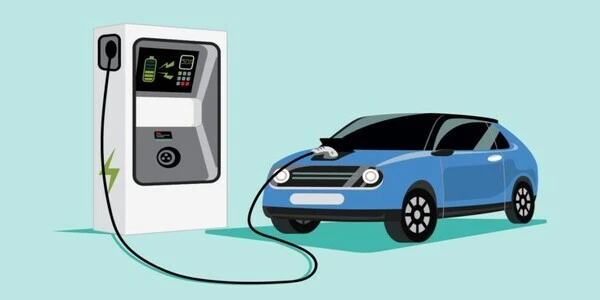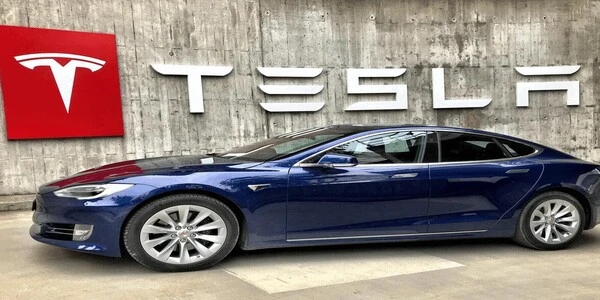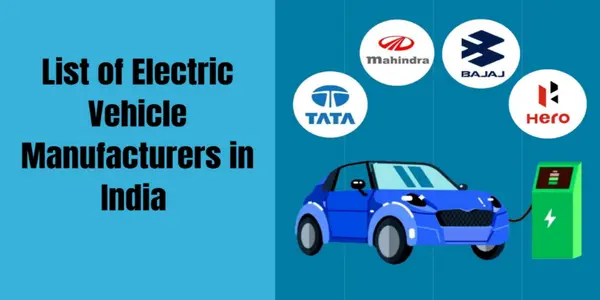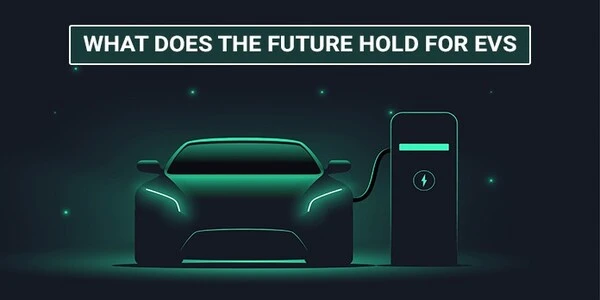The Environmental Impact of Electric Vehicles

Electric cars, from sporty sedans to small SUVs, appear across the globe, boasting of the transportation technology of the future with its promises of cleaner and more sustainable driving. However, are electric vehicles environmentally friendly? This blog post looks deep into the effects of electric vehicles on the environment, digging up both the possible benefits and surprising drawbacks.
Table of Contents
What do you understand by Electric Vehicles?

Electric vehicles (EVs) are a type of vehicle that use one or more electric motors for propulsion instead of a gasoline-powered internal combustion engine. They are becoming increasingly popular due to concerns about pollution and climate change, as well as the rising cost of gasoline.
How do these Electric Vehicles work?
- Electric Motor: Unlike a gasoline engine, EVs use an electric motor for propulsion. The battery pack supplies the motor with electricity, which creates a magnetic field to rotate the motor shaft. This rotation eventually turns the wheels of the car.
- Battery Pack: EVs rely on a large rechargeable battery pack to store electricity. These battery packs typically comprise numerous lithium-ion cells that can be charged by plugging the car into a charging station.
- Power Electronics: Several electronic components manage the flow of electricity in an EV. The onboard charger takes incoming AC electricity from the charging station and converts it to DC for the battery pack. The DC-to-DC converter provides power for the car’s low-voltage accessories, and the inverter converts the DC battery power to AC for the electric motor.
- Regenerative Braking: EVs can recapture some of the energy lost during braking. When the driver applies the brakes, the electric motor acts as a generator, converting the car’s kinetic energy into electricity that is fed back into the battery pack.
Types of Electric Vehicles (EV)
They come in a few different configurations:
- Battery electric vehicles (BEVs): These are the most common type of EV. They run on electricity stored in a large onboard battery pack and can be plugged into a charging station to replenish the battery. BEVs produce zero tailpipe emissions.
- Plug-in hybrid electric vehicles (PHEVs): The combination of an electric motor and a gasoline engine is what makes PHEVs. Plugging them in to charge the battery is possible, but they can also operate on gasoline if the battery is depleted. PHEVs typically have a shorter electric-only range than BEVs, but they offer more overall driving range.
- Hybrid electric vehicles (HEVs): HEVs also use a combination of an electric motor and a gasoline engine, but unlike PHEVs, HEVs cannot be plugged in. The gasoline engine and regenerative braking charge the battery in an HEV.
Also read: What is Virtual Reality | Virtual Reality (VR)
Benefits of Electric Vehicles

Electric vehicles (EVs) offer a number of advantages over traditional gasoline-powered cars. Here are some of the main pros:
- Environmentally friendly: EVs produce zero tailpipe emissions, which can significantly improve air quality and reduce greenhouse gas emissions. This is especially suitable for urban settings.
- Lower running costs: Electric cars are much cheaper to fuel than gasoline cars. The cost of electricity per mile is typically much lower than the cost of gasoline per mile.
- Low maintenance costs: Electric motors have fewer moving parts than gasoline engines, which means there is less to wear out and fewer repairs needed. This can save you money on maintenance over time.
- Better performance: The instant torque that electric motors provide can result in quicker acceleration and a more responsive driving experience.
- Convenience: Many EVs can be charged at home overnight, which means you can wake up with a “full tank” every morning. Increasing numbers of public charging stations are becoming available.
- Tax and financial benefits: Many governments offer tax breaks and incentives for purchasing electric vehicles.
- Quiet ride: Electric vehicles are much quieter than gasoline cars, which can make for a more peaceful driving experience.
Disadvantages of Electric Vehicles

Electric vehicles (EVs) are a promising alternative to traditional gasoline-powered cars, but they still have some drawbacks to consider. Here are some of the main drawbacks:
- Limited Driving Range: Compared to a gas-powered car that can travel several hundred miles on a full tank, most EVs have a shorter driving range, typically around 200-300 miles on a single charge. This can cause what’s known as “range anxiety,” the worry that you won’t be able to find a charging station before your battery runs out.
- Charging Infrastructure: While charging stations are becoming more common, they still aren’t as ubiquitous as gas stations. This can be a challenge for long trips or for people who live in areas without many charging options. Additionally, charging times can vary greatly, from 30 minutes to several hours, depending on the type of charger you use.
- Higher Upfront Cost: EVs typically have a higher initial purchase price than gasoline-powered cars. While government incentives can help offset some of the cost, EVs are still a significant investment.
- Battery Life and Degradation: EV batteries degrade over time, which means their range will gradually decrease. The lifespan of an EV battery depends on various factors, but generally, they can be expected to last around 10-15 years or 100,000 miles. It can be costly to replace an electric vehicle battery.
- Environmental Impact of Battery Production: The mining and manufacturing of EV batteries can have environmental consequences. Extracting raw materials like lithium and cobalt can raise concerns about pollution and labour practices.
What are the Major Producers in the International EV Market?

These are the Major Producers in the International EV Market
- Established Automakers: Traditional car companies like General Motors (US), Hyundai Motor Group (South Korea), Volkswagen Group (Germany) are making significant strides in EVs, alongside their combustion engine vehicles.
- Tesla (US): The undisputed leader in the EV market by market capitalization and brand recognition. Tesla offers a range of premium electric cars known for their performance and technology.
- Chinese EV Companies: BYD, NIO, Li Auto, and Xpeng are some of the leading Chinese EV manufacturers known for innovation and catering to the world’s largest EV market.
- Other Startups: Rivian (US) and Lucid Motors (US) are among the new players challenging the established names with their focus on luxury electric vehicles and trucks.
What are the Major Producers in the Indian EV Market?

The Indian EV market is quite dynamic, with new players like Ola Electric and established manufacturers like Hyundai and TVS Motor Company also setting up shop. This bodes well for increased competition, innovation, and a wider variety of EVs for Indian consumers.
- Tata Motors: The current leader by a significant margin, Tata Motors holds a whopping 72% market share (as of the first half of 2023) with popular EV models like the Tiago, Nexon, and Tigor. They’re aggressively expanding their EV portfolio and workforce.
- Mahindra Electric: A strong contender with around 9% market share. They offer electric cars and scooters, with the eVerito and e2oPlus being some of their well-known models.
- MG Motor India: Popular for their ZS EV, MG Motor holds approximately 10.8% of the market share. They’re bringing in new models like the Air EV to cater to the growing demand.
- Hero Electric: A prominent producer of electric two-wheelers, Hero Electric enjoys a strong reputation in the budget segment.
- Ather Energy: Known for their high-performance electric scooters, Ather Energy is a fast-growing startup making waves in the market.
- Okinawa Autotech: Another major player in the electric two-wheeler space, Okinawa Autotech offers a range of budget-friendly and feature-rich scooters.
Also read: 6 Innovative Technologies Enhancing Learning Experiences
What is the future of Electronic Vehicles for a sustainable future?

The future of EVs is bright, with continuous advancements in battery technology, charging infrastructure, and the adoption of renewable energy. Governments around the world are also implementing policies to encourage EV use. As these challenges are addressed, EVs are expected to become a mainstream transportation option, contributing significantly to a more sustainable future.
Conclusion
The electric vehicle revolution is upon us, and it’s not just about cleaner cars. It’s about a fundamental shift towards a more sustainable future. By embracing EVs, we can create cleaner air, quieter cities, and reduced reliance on fossil fuels. The road ahead may have some bumps, but the destination – a world powered by clean energy – is worth the ride. So, buckle up and join the movement towards a sustainable tomorrow.
Also, check:
FAQs
1. Are EVs really more eco-friendly?
Yes, even with emissions from power generation, EVs typically produce less greenhouse gas than gasoline-powered vehicles.
2. How far can EVs typically travel on a charge?
Ranges vary depending on the model, but many EVs can now travel over 320 kilometers on a single charge.
3. Where can I charge an EV?
Charging infrastructure is expanding rapidly. You can charge at home, public stations, and workplaces.
4. Are EVs more expensive than gasoline cars?
Upfront costs may be higher, but EVs offer significant savings on fuel and maintenance over time.
5. What about EV battery recycling?
Battery recycling technology is constantly improving, and many automakers are incorporating responsible recycling programs.




